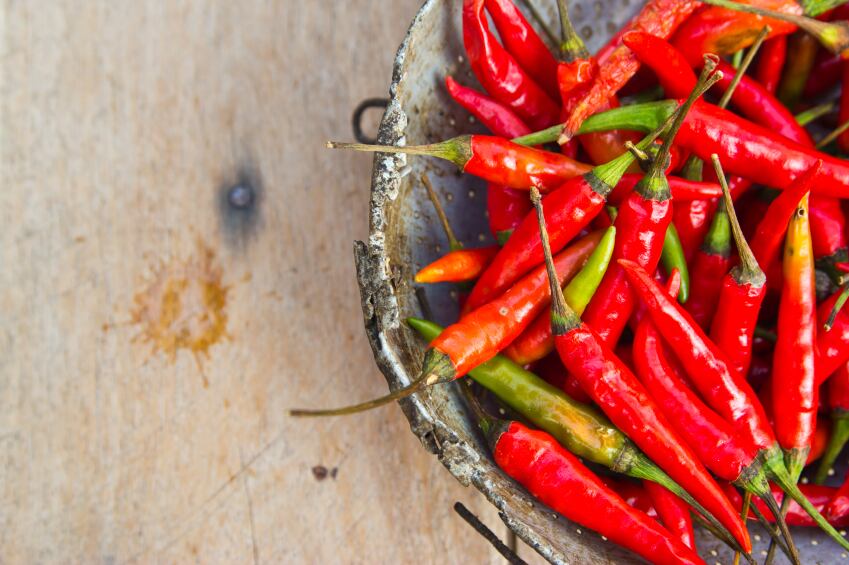Chinese researchers hypothesised that the long-term effects of gingerol and capsaicin, the main pungent and spicy compounds in ginger and chilli peppers respectively, on the TRPV1 receptor were the cause of their pro-carcinogenic or anti-carcinogenic properties.
Over 20 weeks they injected mice with urethane, known to cause adenocarcinoma, a lung cancer – then fed rats capsaicin in olive oil, gingerol in olive oil, capsaicin and gingerol in olive oil, or just olive oil on its own as a control. Mice received 50mg/kg body weight of capsaicin or gingerol.
While the control group saw a 70% incidence of carcinoma, the capsaicin-only group had a 100% incident rate, and the gingerol-only group had a 50% carcinoma rate.
Combination cuts cancer rate
However the group receiving gingerol and capsaicin together had only a 20% incident rate of carcinoma.
“Our results suggested that the combination of gingerol and capsaicin not only reduced the risk of capsaicin carcinogenesis but also synergistically prevented urethane-induced lung carcinogenesis,” wrote the authors of the study, published in the Journal of Agricultural and Food Chemistry.

“This finding opens a new avenue for to counteract the capsaicin-related adverse health factors due to consumption of chili and represents a novel strategy in cancer chemoprevention.”
Both capsaicin and gingerol act on the TRPV1 receptor, and capsaicin has been linked to higher incidence of cancers, particularly stomach cancer.
“6-Gingerol […] is the predominant pungent constituent of fresh ginger and is also an agonist of TRPV1, and 6-gingerol has received much attention regarding cancer prevention but has never been reported to be carcinogenic,” noted the authors.
“Those [explanations] of how both capsaicin and 6-gingerol are agonists of TRPV1 but have opposite effects on cancer activities remains unclear,” they added.
Gingerol corrects signalling, cuts inflammation
Following their study, the researchers came to three main conclusions: first, and unexpectedly, the capsaicin-gingerol combination can reverse the cancer-promoting effects of capsaicin, “suggesting a corrective role of gingerol in malfunctioning molecules along the disrupted signal transduction pathway during carcinogenesis”.
They also showed gingerol reversed the pro-inflammatory and oxidative stress-promoting effect of capsaicin during lung carcinogenesis.
“Finally, we showed that gingerol reversed the efficacy of capsaicin in the lung protein levels of TRPV1, EGFR, NF-κB and cyclin D1, and also reversed the pro-proliferation and EMT-promoting effects of capsaicin during lung carcinogenesis, indicating the major carcinogenic effect of capsaicin and anti-carcinogenic effect of gingerol,” the authors wrote.
Source: Journal of Agricultural and Food Chemistry
Published online ahead of print, doi: 10.1021/acs.jafc.6b02480
“Gingerol Reverses the Cancer-Promoting Effect of Capsaicin by Increased TRPV1 Level in a Urethane-Induced Lung Carcinogenic Model”
Authors: Geng, S. et al
